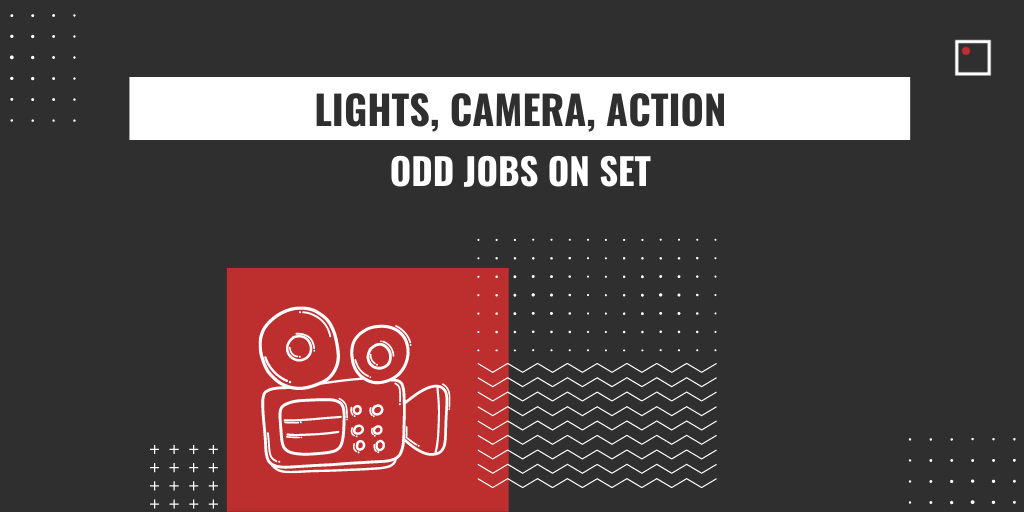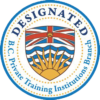Since introducing the GH4, Panasonic has become the newest competitor in the Ultra HD scene. With AV enthusiasts increasingly turning towards 4K, we’re taking a look at some of the current players in 4K recording.
Red Epic Dragon
 RED is one of the best known brands in the Ultra HD world, and has a reputation as a leading innovator in cinema technology. The newest member of their line up is Red Epic Dragon. Their latest sensor boasts 16.5 stops of dynamic range in addition to its size and resolution. The amount of noise, which has been the chief complaint about the RED line of cameras by cinematographers in the past, has been vastly improved even at 6K RAW. Epic Dragon, of course, comes with all the advantages of other RED cameras such as RED workflow, RED codec, and compatibility with both EF and PL mount lenses, which gives you maximum lens choices.
RED is one of the best known brands in the Ultra HD world, and has a reputation as a leading innovator in cinema technology. The newest member of their line up is Red Epic Dragon. Their latest sensor boasts 16.5 stops of dynamic range in addition to its size and resolution. The amount of noise, which has been the chief complaint about the RED line of cameras by cinematographers in the past, has been vastly improved even at 6K RAW. Epic Dragon, of course, comes with all the advantages of other RED cameras such as RED workflow, RED codec, and compatibility with both EF and PL mount lenses, which gives you maximum lens choices.
Quick Spec Overview:
- Sensor/Effective Resolution: 19 Megapixel DragonTM(35mm)/6144 x 3160
- Dynamic Rage: 16.5+
- Recording Modes: 6K RAW (2:1, 2.4:1) 5K RAW (Full Frame, 2:1, 2.4:1 and Anamorphic 2:1) 4.5K RAW (2.4:1) 4K RAW (16:9, HD, 2:1 and Anamorphic 2:1) 3K RAW (16:9, 2:1 and Anamorphic 2:1) 2K RAW (16:9, 2:1 and Anamorphic 2:1) 1080p RGB (16:9) 720p RGB (16:9)
- Lens Mount: PL and EF
Delivery Formats:
- 4K : DPX, TIFF, OpenEXR (RED RAY via optional encoder)
- 2K : DPX, TIFF, OpenEXR (RED RAY via optional encoder)
- 1080p RGB or 4:2:2, 720p 4:2:2 : Quicktime, JPEG Avid AAF, MXF.
- 1080p 4.2.0, 720p 4:2:0 : H.264, .MP4
Frame Rates: 23.98, 24, 25, 29.97, 47.96, 48, 50, 59.94 fps, all resolutions
Dimensions/Weight: 5lb
Sony CineAlta F65
Ever since its entrance into the Ultra HD world with PMWF55, Sony has quickly become RED’s major competitor in the field. The latest in their CineAlta line up is F65 which offers recording up to 8K resolution. Like the RED camera, Sony users can take advantage of Sony’s own 4K workflow. It uses CMOS sensor and has a rotary shutter option to overcome the defects of rolling shutter. The sensor also employs an SGamut system which provides wider colour space than a print film to achieve the most natural colour.
Quick Spec Overview:
- Sensor: Total 20 Megapixels, 28mm (d)/ 8192 x 2160
- Dynamic Rage: 14 Stops
- Recording Modes: F65 RAWSQ 16 bit Linear 2.0 Gbps, F65 RAWHFR 16 bit Linear 2.0 Gbps, F65 RAWLite 16 bit Linear 1.20 Gbps, SRHQ HD 12 bit10 bit 4:4:4 880 Mbps, SRSQ HD 10 bit 4:2:2 440 Mbps, SRLite 10 bit 4:2:2 220Mbps
- Lens Mount: PL Mount
Delivery Formats:
- MPEG2 Long GOP
- HD 422 mode: CBR
- 50 Mbps max
- MPEG2 422P@HL
Frame Rates: 23.98p/24p, 25p, 29.97p, 59.94p/60p in most recording mode, 119p/120p in HFR
Dimensions/Weight:12 x 91/8 x 73/4 inches (305 x 227 x 195 mm)/11lb (5Kg)
GoPro Hero3+ Black Edition
GoPro has also dipped into the UltraHD pool with their latest camera Hero3+ Black Edition. Like the rest of GoPro’s products, Hero3+ is more suited to specialized purposes than straight up filmmaking. Hero3+ Black retains all the advantages of GoPro in addition to 4K resolution. It is incredibly light at 74g (20% lighter than its predecessor), comes with waterproof housing, time lapse and burst photo mode, WiFi remote and adhesive mounts to capture your next adventure in Ultra HD.
Quick Spec Overview:
- Sensor: 12 Megapixel/4000×3000
- Recording Modes: 4K, 4K 17:9, 2.7K, 2.7K 17:9, 1440P, 1080P, 1080P Superview, 960P, 720P, 720P Superview, WVGA
- Lens Mount: N/A
- Delivery Formats: H.264, mp4
Dynamic Range: Couldn’t find exact number of stops. But Hero3+ series is said to have a vast improvement in dynamic range compared to the previous series, allowing much more information to be retrieved from the highlight or black area.
Frame Rates: Ranging from 12FPS to 240FPS, availability depends on the resolution. (Only 12FPS available at 4K)
Dimensions/Weight: 74g
Blackmagic Production Camera 4K
Blackmagic is another new force in camera technology innovation. It has produced a line of high end, cinema quality pocket cameras that have revolutionized the filmmaking process. Blackmagic cameras are extremely versatile; the global shutter eliminates the challenges of rolling shutter, and touchscreen allows for fast metadata inputting. You can also choose between CinemaDNGR RAW and Apple ProRes for delivery to suit the needs of your post-production. The fact that it has a very compact body, yet large high resolution sensor means it can be used for everything including feature film, documentary, indie film and live events.
Quick Spec Overview:
- Sensor/Effective Resolution: 21.12mm x 11.88mm (Super 35)/3840 x 2160
- Dynamic Range: 12 Stops
- Recording Modes: 3840 x 2160 or 1920×1080
- Lens Mount: EF or ZE
Delivery Formats: CinemaDNG RAW and Apple ProRes 422 (HQ)TM
Frame Rates: 3840 x 2160p23.98, 3840 x 2160p24, 3840 x 2160p25, 3840 x 2160p29.97, 3840 x 2160p30, 1920 x 1080p23.98, 1920 x 1080p24, 1920 x 1080p25, 1920 x 1080p29.97, 1920 x 1080p30, 1920 x 1080i50, 1920 x 1080i59.94
Dimensions/Weight: 6.54×5.24×4.96 (Inch)/3.75lb
Panasonic Lumix GH4
Mirrorless camera has been gaining more and more attention as the (often times better) alternative to the DSLR amongst digital photography enthusiasts in the recent years. Panasonic is still holding out on the exact release information, but it is expected to come out this winter. It would be interesting to see if DSLR filmmakers are making the switch to mirrorless with the introduction of 4K video recording which can be a real game changer. Mirrorless cameras are very similar to DSLR in terms of their operation, but without the annoyance of a mirror mechanism. It also may attract a lot of young filmmakers who are less bound by the lens choice and looking to purchase their first professional camera.
Quick Spec Overview:
- Sensor/Effective Resolution: 17.3 x 13.0 mm(17.20 megapixels)/16.05 megapixels
- Dynamic Range: 1⁄3 stop at ISO 200, no number of stops given
- Recording Modes: 4K at 100Mbps, 1080P at 200Mbps
- Lens Mount: Micro four third
Delivery Formats: MOV (Audio format LPCM), MP4 (Audio format LPCM /AAC 2ch), AVCHD (Audio format: Dolby Digital 2ch)
Frame Rates: 30/25/24 FPS at 4K, 60/50/30/25/24fps at 1080P Dimensions/Weight: 132.9 x 93.4 x 83.9mm / 5.23 x 3.68 x 3.30 in (excluding protrusions)/Approx. 480g / 16.93 oz (Body only)
Written by Freddie Kim


 Which brings us to the next point. We know you’re passionate about filmmaking and determined to pursue your dream project. Yet setting aside time to do so can often be a challenge. Attending film school gives you an opportunity to explore your ideas, learn new techniques, and hone your craft.Although it might seem counterintuitive, deadlines are useful because they increase productivity and time management. Instead of being relegated to the “when I have time,” pile attending film school allows you to focus on just one thing: your personal development as a filmmaker.
Which brings us to the next point. We know you’re passionate about filmmaking and determined to pursue your dream project. Yet setting aside time to do so can often be a challenge. Attending film school gives you an opportunity to explore your ideas, learn new techniques, and hone your craft.Although it might seem counterintuitive, deadlines are useful because they increase productivity and time management. Instead of being relegated to the “when I have time,” pile attending film school allows you to focus on just one thing: your personal development as a filmmaker.









